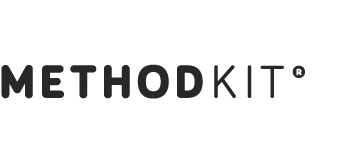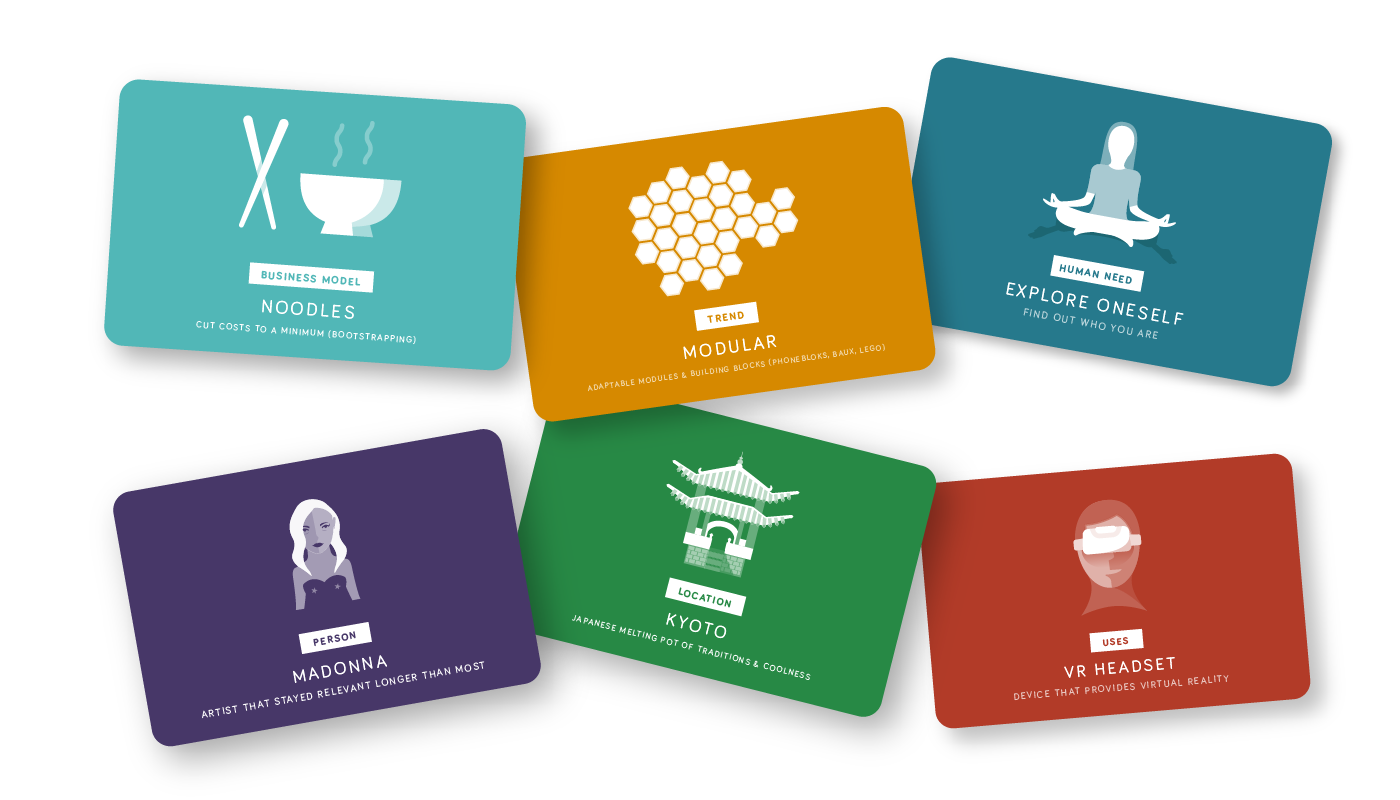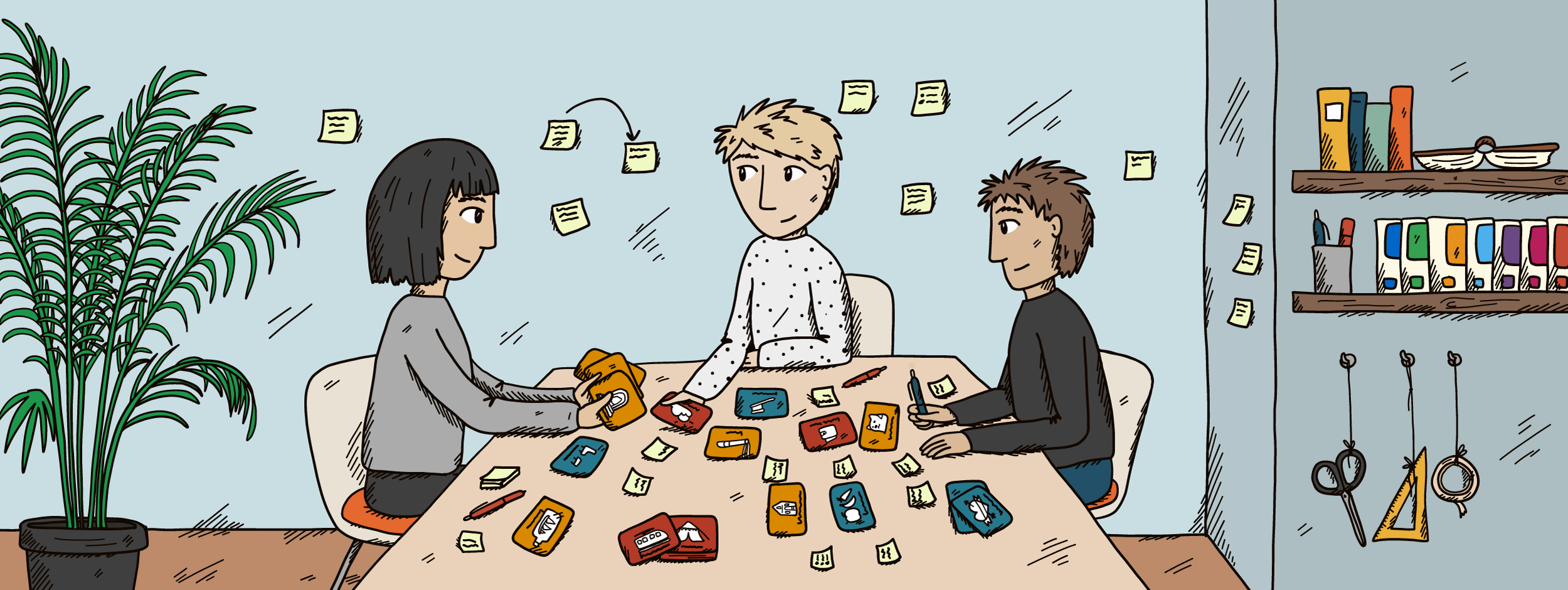
HACKATHONS
MethodKit with […] is a growing library of the basic building blocks for ideas
The libraries used for hackathons are reoccurring bits and pieces of trends, tech components and human needs. New ideas are essentially new compositions of already known bits and pieces.
After participating in numerous workshops on idea development and idea mashups we have summarized the most commonly reoccurring bits and pieces that ideas and concepts normally consist of.
The idea was simple, to create libraries of cards with different components that can be combined into ideas. Cards that encourage creative playing and reshaping of ideas. As a result of their different purpose, the MethodKit with […] decks have a different mechanics than MethodKit for […].
The decks are most useful in the first part of a hackathon, coming up with what idea to build during it.
Hackathon – how?
Example of pieces and fragments to be combined in an idea mashup workshop with cards from MethodKit with […]. Red: Tech Building Blocks. Yellow: Trends. Green: Locations. Blue: Human Needs. Turcoise: Business Models
Work in small groups (3–7 people). If you are more participants, split up into smaller groups. Decide which type of solution that you would like to develop. For example:
A product that… uses [technology] with [trend] on [location] fulfilling [human need] made of [material] made with [person] in mind, that offers [value/business model] and makes money from [revenue stream/business model].
You could also complete the sentences with an [idea] … that solves the housing crisis or a [solution] … that makes people more healthy.
Instructions for mashup workshops
- Place the cards on a table. If you didn’t prepare cards/notes with building blocks already, conduct a small brainstorm around the different topics (tech/trend/human needs/personas/locations). A good idea is to use different post-it colors for the different categories.
- Discuss the different building blocks.
- Combine 2, 3, 4 or 5 cards. For example Technology+Trend+Location or Technology+Technology+Technology.
Write down the idea on a post-it. Do this individually or in group. - Combine again until good result is achieved or time is up.
- Refine and enhance the ideas you have come up with.
- Present the best solutions from each group to the larger group.
Tip! Conduct parts of the workshop in silence where everyone is working individually, mixed with group work. That allows for parallel idea development processes.
The Libraries
Essential fragments for idea development

1. Tech components and services
A product that uses [component/sensor/api/services].
The things could be:
- Components (NFC, Bluetooth)
- Products (Apple Watch, iPhone, Speakers, Microphone)
- Sensors (Light, motion, pressure)
- Services (Facebook, Twitter)
- APIs (Facebook friends, Maps geodata, Statistics)
MethodKit with Tech Building Blocks (120 cards).
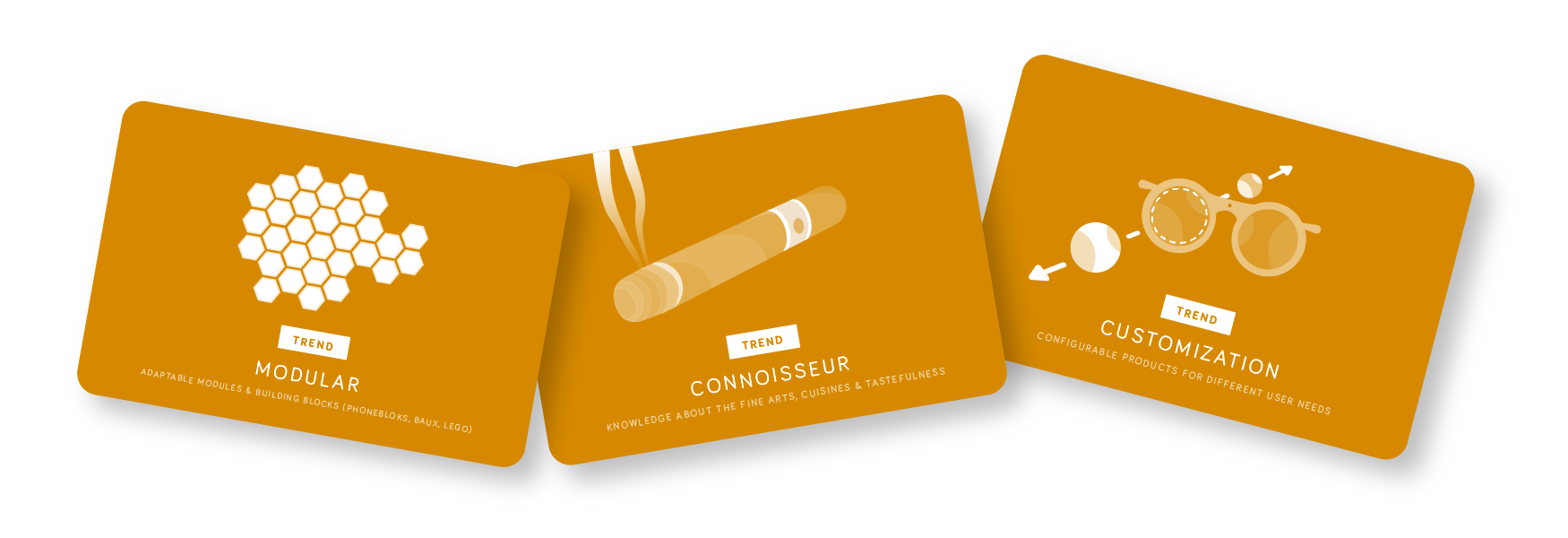
2. Trends
A product that docks into/uses [trend].
Trends could be:
- Micro trends: Something becoming hip that was unknown or was not cool before (e.g. Christmas present of the year). Can be seen as a temporary tendency (e.g. memes such as Ice Bucket Challenge)
- Mega trends: Longer ongoing tendencies (e.g. globalisation, religiously motivated wars, aging, urbanisation).
- Process that changes the situation for good (e.g. exhaustion of world’s resources).
MethodKit with Trends (100 cards).
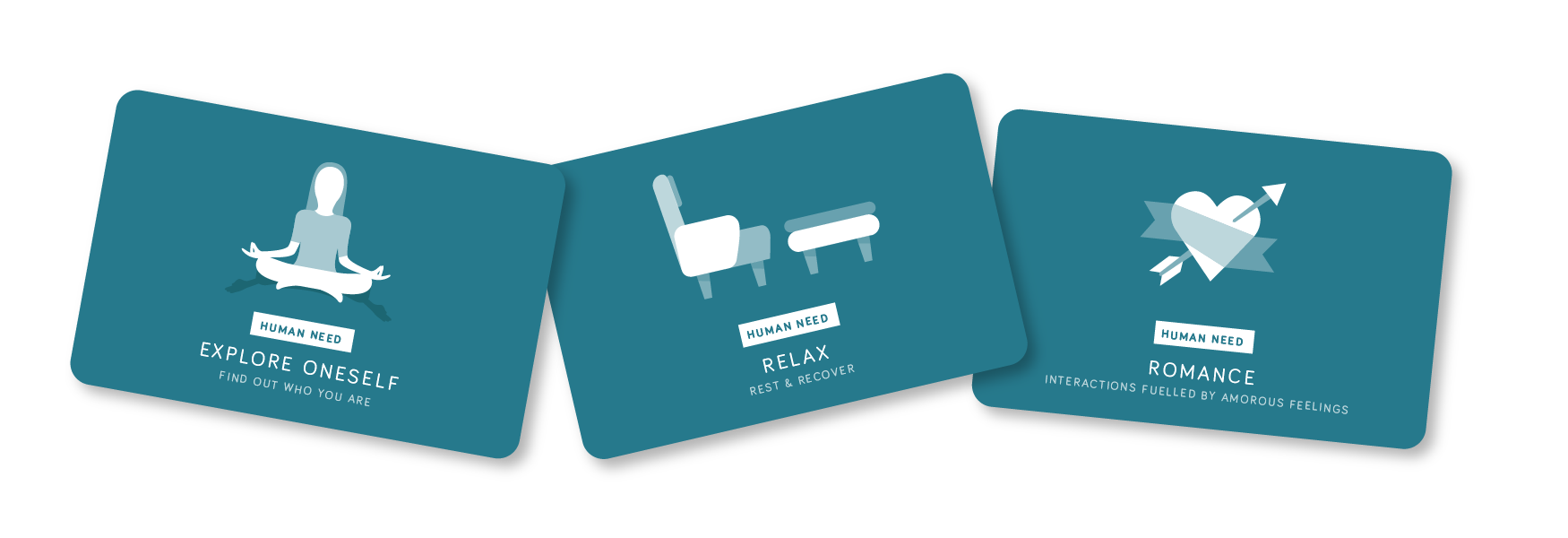
3. Human needs
A product that docks into [human need].
Human needs create discussions on what people need, and more specifically: does you product/idea really fill a purpose in the world.
Example of Human needs:
- Primary needs (love, belonging, food, shelter, health, water)
- Secondary needs (WiFi, pranks)
MethodKit with Human Needs (60 cards).
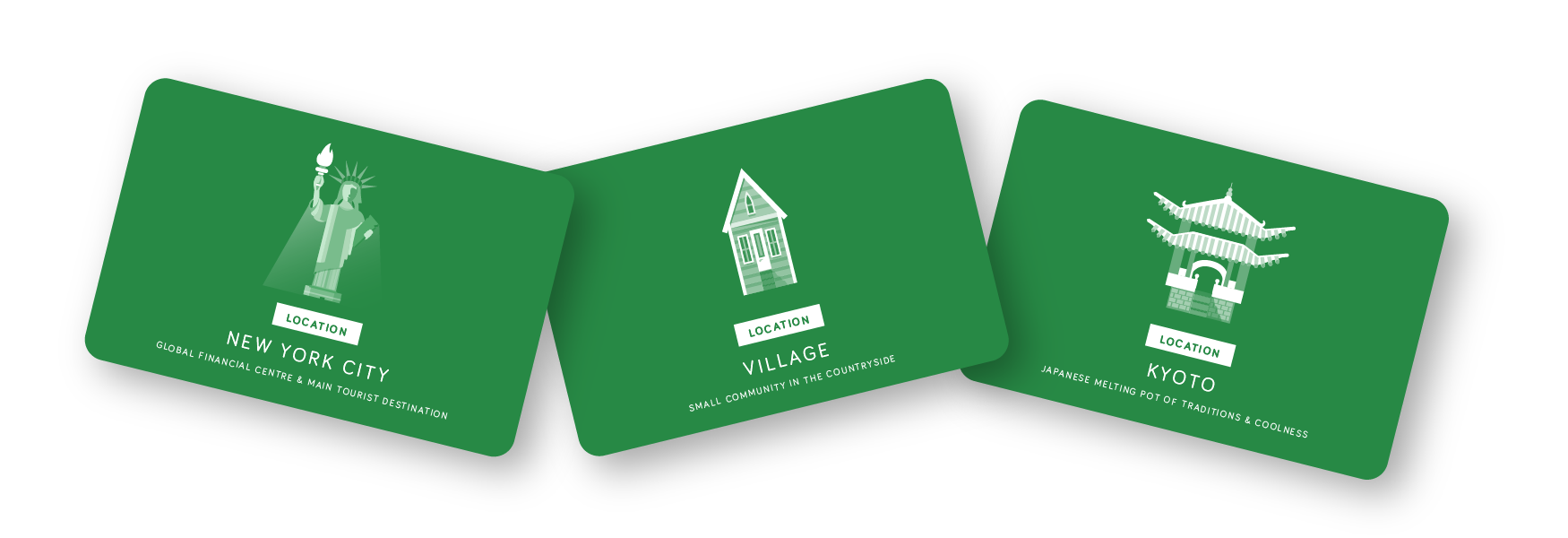
4. Locations
- A product that would be used in/at/on [location].
- A product that would solve common problems in [location].
Locations could be:
- Parts of the world (South-east Asia, Latin America, Rural Africa, Scandinavia)
- Countries (Brazil, China, India)
- Cities (London, Mumbai, NYC, São Paulo)
- Venues (restaurants, clubs, cafés)
- Public spaces (parks, squares, buses, subway)
- Workplaces (factories, offices)
- Type of location (city centre, suburb, projects, small town, countryside)
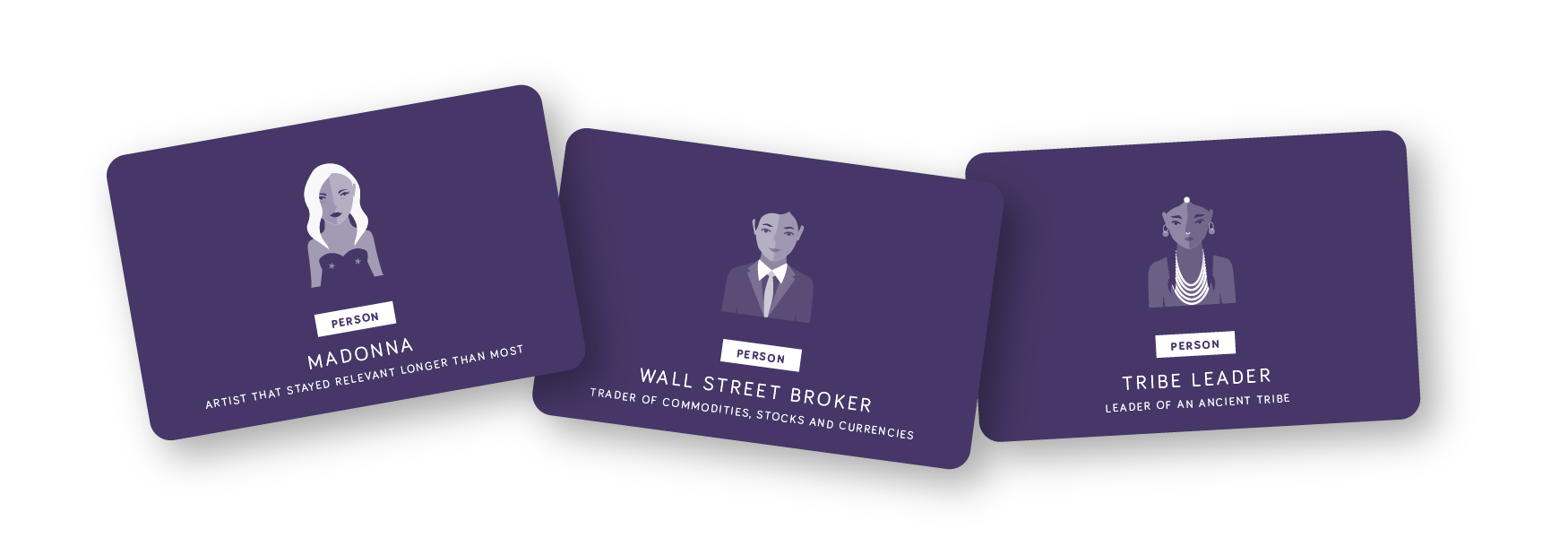
5. Persons/People
- A product for [person].
- A product having [person] as target group.
- A product solving [person’s] problem.
People from different places, classes, generations and life situations that makes you reconsider what’s needed in the world. These type of different personalities/people is often called Personas.

6. Business models
- A product getting money from [revenue stream].
- A product providing [value] to target group.
MethodKit with Business Models is a library of 68 cards with value propositions, funding models & revenue streams.
MethodKit with Business Models
The Bundle
The kits are available as the Brainstorming Bundle.
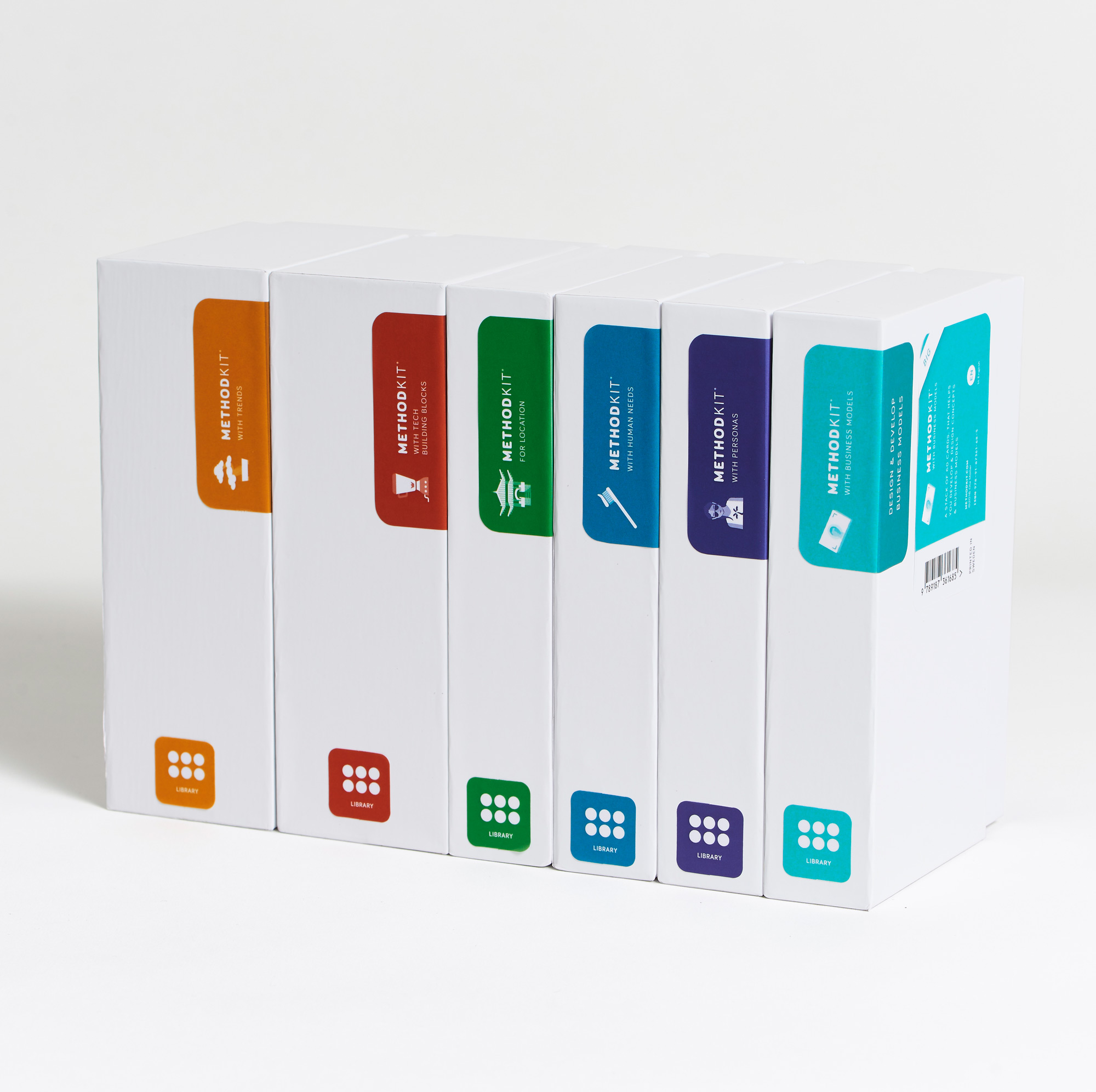
Resources & links
– How to use MethodKit, more examples on how the cards can be used.
– Hackathon/Brainstorming Bundle, our collection of cards for hackathons.
